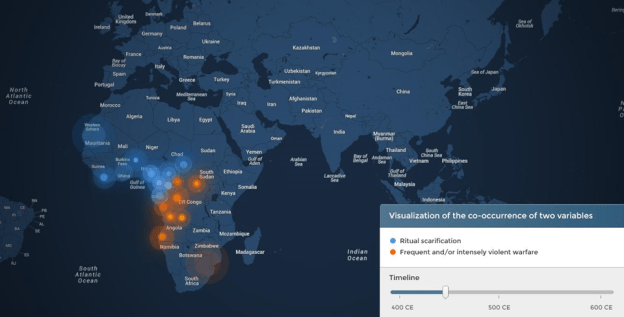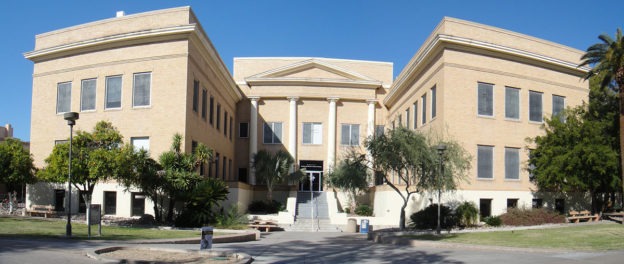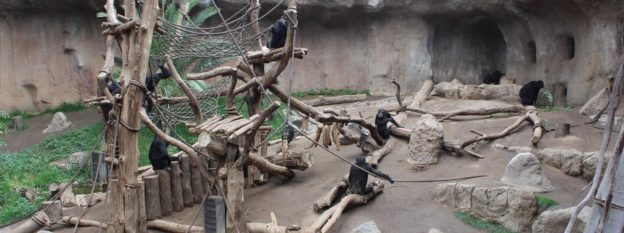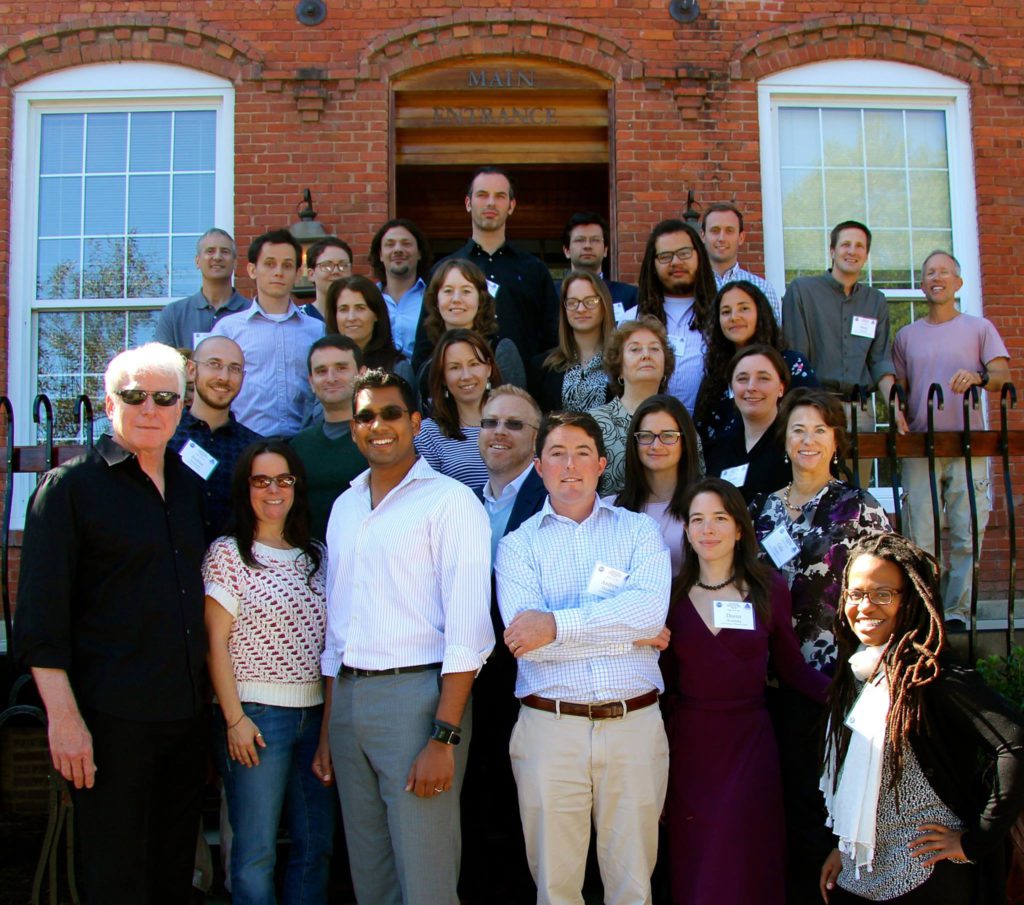Category Archives: General

Database of Religious History at the Cultural Evolution of Religion Research Consortium Meeting in Montreal, Canada
This weekend the Database of Religious History (DRH) Team presented the DRH at the Cultural Evolution of Religion Research Consortium (CERC) Plenary Meeting at McGill University in Montreal, Canada. Our goal was to update the broader CERC team on our achievements for the year and to attract more historians and religious studies scholars to the project.
Edward Slingerland (Project Director) presented an overview of the strategy and future directions of the project.
Brenton Sullivan (Managing Editor) discussed how the project relates to other humanities databases and religious studies in general.
Frederick Tappenden (Regional Editor) discussed how our terminology, in particular, “religious group”, has evolved through feedback from historians and religious scholars.
Jessica McCutcheon (Managing Editor) remotely updated the audience on recruitment and changes in usability.
As Technical Director of the project, I discussed the technical design and updated the audience on the development of the project, including some exciting new features (e.g. the ability to challenge answers).
Carol Ember, President of the Human Relations Area Files (HRAF) at Yale University then responded to our panel with useful comments and suggestions.
You can read more about our efforts to publicize the database here.

Database of Religious History at Department of Statistics, University of British Columbia, Canada
I was invited to present the Database of Religious History at the Department of Statistics Seminar Series. Nancy Heckman, Head of the Statistics Department, watched our award winning video on the database and was interested in possible connections with researchers in statistics. I presented some of the technical design aspects of the database as well as our statistical approach to analyzing the data.
Afterwards, I had lunch with several members of the department, including Nancy Heckman, Ruben Zamar, Cindy Greenwood, and Davor Cubranic, as well as with Andrew Trites, Director of the Marine Mammal Research Unit and North Pacific Universities Marine Mammal Research Consortium and Fisheries Centre Co-Director. I hope that collaborations with the Department of Statistics will allow us to find new ways to share and analyze our rapidly growing data.

Cultural Brain Hypothesis at Arizona State University, Arizona
This week I visited Arizona State University, Arizona. Rob Boyd and Joan Silk invited me to present my research on the Cultural Brain Hypothesis at the Evolution of Social Complexity Colloquium Series, sponsored by the School of Human Evolution and Social Change, the Institute of Human Origins and the Consortium for Biosocial Complex Systems.
The Cultural Brain Hypothesis (in prep; co-authored with Maciek Chudek and Joe Henrich) describes the evolution of large brains and parsimoniously explains several empirical relationships between brain size, group size, social learning, mating structures, culture, and the juvenile period. The model also describes the selection pressures that may have led humans into the realm of cumulative cultural evolution, further driving up the human brain size.
The School of Human Evolution and Social Change and the Institute of Human Origins has an exceptional group of human evolutionary researchers. While at Arizona State University, I caught up with Rob Boyd, Joan Silk, Kim Hill, Sarah Mathew, Charles Perreault, Michelle Kline, and Matt Gervais.

Cultural Brain Hypothesis, Cultural Evolution & Human Social Networks at Stanford University, California
This week I visited Stanford University, California. Jamie Holland Jones invited me to present my research on human evolution, cultural evolution, and social networks at the Stanford Anthropology Colloquium Series. I presented three related projects:
The Cultural Brain Hypothesis (in prep; co-authored with Maciek Chudek and Joe Henrich), describes the evolution of large brains and parsimoniously explains several empirical relationships between brain size, group size, social learning, mating structures, culture, and the juvenile period. The model also describes the selection pressures that may have led humans into the realm of cumulative cultural evolution, further driving up the human brain size.
Sociality Influences Cultural Complexity (2014; co-authored with Ben Shulman, Vlad Vasilescu, and Joe Henrich) on the relationship between sociality and cultural complexity.
Cultural Dispositions, Social Networks, and the Dynamics of Social Influence: Implications for Public Opinion and Cultural Change (under review; co-authored with Mark Schaller) describes a mechanism through which realistic human social network structures can emerge and the implications of these mechanisms for cross-cultural differences in cultural transmission and innovation.

Developing Best Practices for Teaching Evolution in the Social Sciences NESCent Meeting in Durham, North Carolina
I and twenty-nine other scholars from the social and biological sciences met to discuss Developing Best Practices for Teaching Evolution in the Social Sciences.
Cristine Legare, Andrew Shtulman, and John Opfer did a flawless job in organizing and leading the Catalysis Meeting at the NSF funded National Evolutionary Synthesis Center (NESCent) in Durham, North Carolina.
We discussed the obstacles, pedagogical techniques, and methods of assessment in teaching evolution. The next step is find ways to convey these best practices to the broader research and teaching community. Possible products include a suggested curriculum and white paper outlining best practices.
Other attendees included:
Tanya Broesch (Simon Fraser University)
Justin Busch (University of Texas at Austin)
David Buss (University of Texas at Austin)
Maciek Chudek (Arizona State University)
Julia Clarke (University of Texas at Austin)
Dan Conroy-Beam (University of Texas at Austin)
Benjamin Cox (University of Texas at Austin)
Margaret Evans (University of Michigan)
Erin Furtak (University of Colorado Boulder)
Cari Goetz (University of Texas at Austin)
Katie Hinde (Harvard University)
Michelle Kline (University of California, Santa Barbara)
Rob Kurzban (University of Pennsylvania)
Rose McDermott (Brown University)
Marie Monfils (University of Texas at Austin)
Robin Nelson (Skidmore College)
Lars Penke (University of Goettingen)
David Rakison (Carnegie Mellon University)
Matt Rossano (Southeastern Louisiana University)
Joshua Rottman (Boston University)
Laurie Santos (Yale University)
Mark Schaller (University of British Columbia)
Gale Sinatra (University of Southern California)
Bill von Hippel (University of Queensland)
Rachel Watson-Jones (University of Texas at Austin)
Deena Weisberg (University of Pennsylvania)

Cultural Brain Hypothesis and Cumulative Cultural Brain Hypothesis at St Andrews, Scotland
This week I visited the University of St Andrews, Scotland. Kevin Laland invited me to present my paper (in prep) on the Cultural Brain Hypothesis and the Cumulative Cultural Brain Hypothesis. The paper, co-authored with Maciek Chudek and Joe Henrich, describes an evolutionary model of the evolution of brains and parsimoniously explains several empirical relationships between brain size, group size, social learning, mating structures, culture, and the juvenile period. The model also describes the selection pressures that may have led humans into the realm of cumulative cultural evolution, further driving up the human brain size. I presented the research to Kevin’s lab and to Andy Whiten’s lab. I will also be presenting the paper early next month at the 26th Annual Meeting of Human Behavior and Evolution Society (HBES) in Natal, Brazil.
While at St Andrew’s, I met with Andy Whiten, Luke Rendell, Kate Cross, Ana Navarrete, Daniel Cownden, Daniel van der Post, Cara Evans, James Ounsley, Andrew Whalen, Lewis Dean, and Murillo Pagnotta, among others. Kevin is currently on sabbatical at the University of Cambridge.
Visit to CERN in Geneva, Switzerland
This week I spent an inspiring day at CERN in Geneva, Switzerland. Ewan Hill gave us a tour of ATLAS experiment. Thank you to my friend, Simon Viel, for organizing.

University of Zurich in Zurich, Switzerland
This week I visited the Department of Economics at the University of Zurich. I met with Charles Efferson and toured the department’s impressive economics and neuroscience research facilities.

Vrije Universiteit Amsterdam in Amsterdam, Netherlands
This week I had meetings with Mark van Vugt, Dan Balliet, and Allen Grabo at the Vrije Universiteit in Amsterdam, Netherlands. I also met with Tom Pollet, Josh Tybur, and Francesca Righetti. Before leaving Amsterdam, I caught up with my friend Bastiaan Rutjens, formerly a postdoc at UBC and now at the University of Amsterdam.

Max Planck Institute for Evolutionary Anthropology in Leipzig, Germany
This week I had meetings with Mike Tomasello and several members of his lab, including Robert Hepach, Marco Schmidt, and Bailey House at the Max Planck Institute for Evolutionary Anthropology in Leipzig, Germany. It was a great pleasure to also visit the Institute’s primate research facility at the Leipzig Zoo.

Cultural Evolution and How Sociality Influences Cultural Complexity at University of Queensland, Australia
This week I visited my alma mater, The University of Queensland, Australia. Mark Nielsen and Thomas Suddendorf (both of whom I was lucky enough to take classes with as an undergraduate) invited me to present my paper on how “Sociality Influences Cultural Complexity” and my chapter on Cultural Evolution. The chapter, coauthored with Maciek Chudek and Joe Henrich, will be appearing in the new Handbook of Evolutionary Psychology. I presented the research to the Evolutionary Psychology group, which I took great pleasure in, being a member of the group as an undergraduate.
While at Queensland, I also caught up with my Honours supervisor, Penny Sanderson, and my former colleagues, Morgan Tear and Matt Thompson.

Vanier Canada Graduate Scholar
I was awarded the Vanier Canada Graduate Scholarship. Launched in 2009, the Vanier Canada Graduate Scholarship (Vanier CGS) Program’s goal is to strengthen Canada’s ability to attract and retain the world’s top-tier doctoral students by providing successful candidates with significant freedom to pursue and complete doctoral studies. Vanier scholars demonstrate leadership skills and a high standard of scholarly achievement. The award is worth $150 000 over 3 years.
This award will fund my research for the next 3 years and hopefully raise the profile of research on the role and evolution of culture in human evolution.

Technical Director of The Database of Religious History
I was recently appointed the Technical Director of the The Database of Religious History (DRH). The DRH is one of the flagship initiatives of the Cultural Evolution of Religion Research Consortium (CERC). The DRH aims to bring together, in a standardized, systematic form, data on religious systems (and later more general historical variables) from across the world and throughout history, from the earliest archaeological records up to approximately 1500-1600 CE. By creating a quantitative database of social complexity, warfare, ritual, religion, and resources from across the globe and throughout history in a manner that will allow systematic statistical analysis, we hope to discover new patterns in world history, and test of novel hypotheses about the evolution of social complexity.
As Technical Director, I am responsible for the creation of the database system and general infrastructure.

Interview with Elsevier Connect
Ursula Culligan from Elsevier Connect interviewed me about my proposal for a peer review incentive system. You can read the text of our interview here.
Department Statistical Consultant
I was recently appointed as one of two Department Statistical Consultants. As a Statistical Consultant I will provide advice and assistance to faculty and graduate students on the research design and statistical components of their research.








